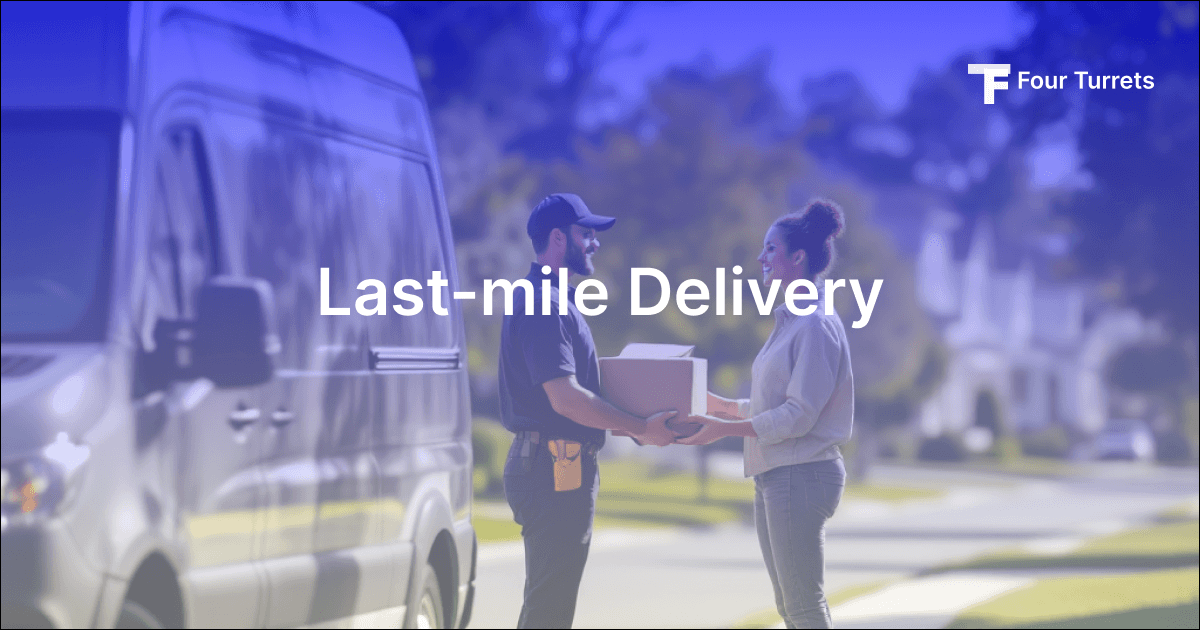As e-commerce and customer expectations soar, businesses must refine their delivery service to ensure a seamless delivery experience. In this guide, we’ll explore how to optimize last mile logistics, improve the delivery process, and create a superior customer experience with faster delivery and efficient logistics solutions.
What is Last Mile Delivery?
Last mile delivery refers to the final leg of the logistics journey, where parcels are transported from a distribution hub to the customer’s doorstep. This stage is crucial because it directly impacts customer satisfaction, brand perception, and the overall delivery experience. The final mile is often the most expensive and complex part of the shipping process, accounting for up to 53% of total delivery costs.
Why Is Last Mile Delivery So Important?
- Direct Customer Impact: The last mile is the only part of the logistics chain that interacts directly with the customer, making it vital for a positive delivery experience.
- Cost and Efficiency: Inefficiencies in the last leg can lead to higher costs, delayed deliveries, and dissatisfied customers.
- Competitive Advantage: Optimized last mile delivery services can set your business apart in a crowded market.
Key Challenges in Last Mile Delivery
- High Costs: Last mile delivery is resource-intensive, often requiring more labour and fuel per package than earlier stages.
- Inefficient Routing: Poorly optimized delivery routes lead to delays and increased expenses.
- Failed Deliveries: Incorrect addresses or customer unavailability can result in costly re-deliveries.
- Rising Expectations: Customers now expect real-time tracking, flexible delivery options, and on-time arrivals.
- Urban Congestion: Increased parcel volume in cities leads to traffic, pollution, and logistical headaches.
Best Practices for Optimizing Last Mile Logistics
1. Leverage Advanced Technology
- Route Optimization: Use AI-driven software to plan the most efficient delivery routes, reducing delivery time and fuel costs.
- Real-Time Tracking: Implement tracking systems that provide customers with live updates and accurate ETAs.
- Automation: Explore autonomous vehicles, drones, and delivery robots to streamline supply chain operations and reduce labour costs.
2. Enhance Communication and Transparency
- Provide real-time notifications and clear final delivery windows.
- Allow customers to communicate directly with drivers for added convenience.
3. Focus on Customer Experience
- Offer flexible delivery options, such as same-day or scheduled deliveries.
- Collect and act on customer feedback to continually improve your delivery service.
4. Emphasize Sustainability
- Optimize routes to reduce emissions.
- Consider eco-friendly delivery vehicles and packaging.
5. Analyse and Adapt
- Use analytics to monitor delivery success rates, on-time performance, and customer satisfaction.
- Regularly review and update your logistics and fulfilment strategies.
Technological Innovations in Last Mile Delivery
- AI and Machine Learning: Predictive analytics help forecast demand and optimize driver performance.
- Autonomous Solutions: Drones and robots are increasingly used for short-distance, urban deliveries.
- Integrated Platforms: Modern last mile delivery services often integrate with third-party logistics providers for seamless operations.
The Relationship Between E-Commerce and Last Mile Delivery
E-commerce growth has dramatically increased the demand for efficient last mile logistics. As online shopping volumes rise, so do customer expectations for faster delivery and real-time updates. Businesses must invest in optimized delivery routes and advanced logistics solutions to keep pace with this evolving landscape.
Who Uses Last-Mile Delivery Options?
Last mile delivery is used by a wide range of businesses, including:
- E-commerce retailers: To deliver products directly to consumers.
- Grocery and food delivery services: For fast, fresh deliveries.
- Healthcare providers: For time-sensitive medical shipments.
- Third-party logistics companies: To support brands with scalable delivery solutions.
Conclusion
Optimizing last mile delivery is essential for any business aiming to enhance its delivery service, reduce costs, and exceed customer expectations. By leveraging technology, focusing on customer experience, and continually refining your logistics and fulfilment processes, you can transform the last leg of your shipping process into a powerful competitive advantage.
Frequently Asked Questions
Who used last-mile delivery option?
Last mile delivery is used by e-commerce retailers, grocery and food delivery services, healthcare providers, and third-party logistics companies to ensure products reach customers quickly and efficiently.
Do e-commerce business use last mile delivery option?
Yes, e-commerce businesses depend on last mile delivery services to fulfil customer orders, provide faster delivery, and enhance the overall delivery experience.



